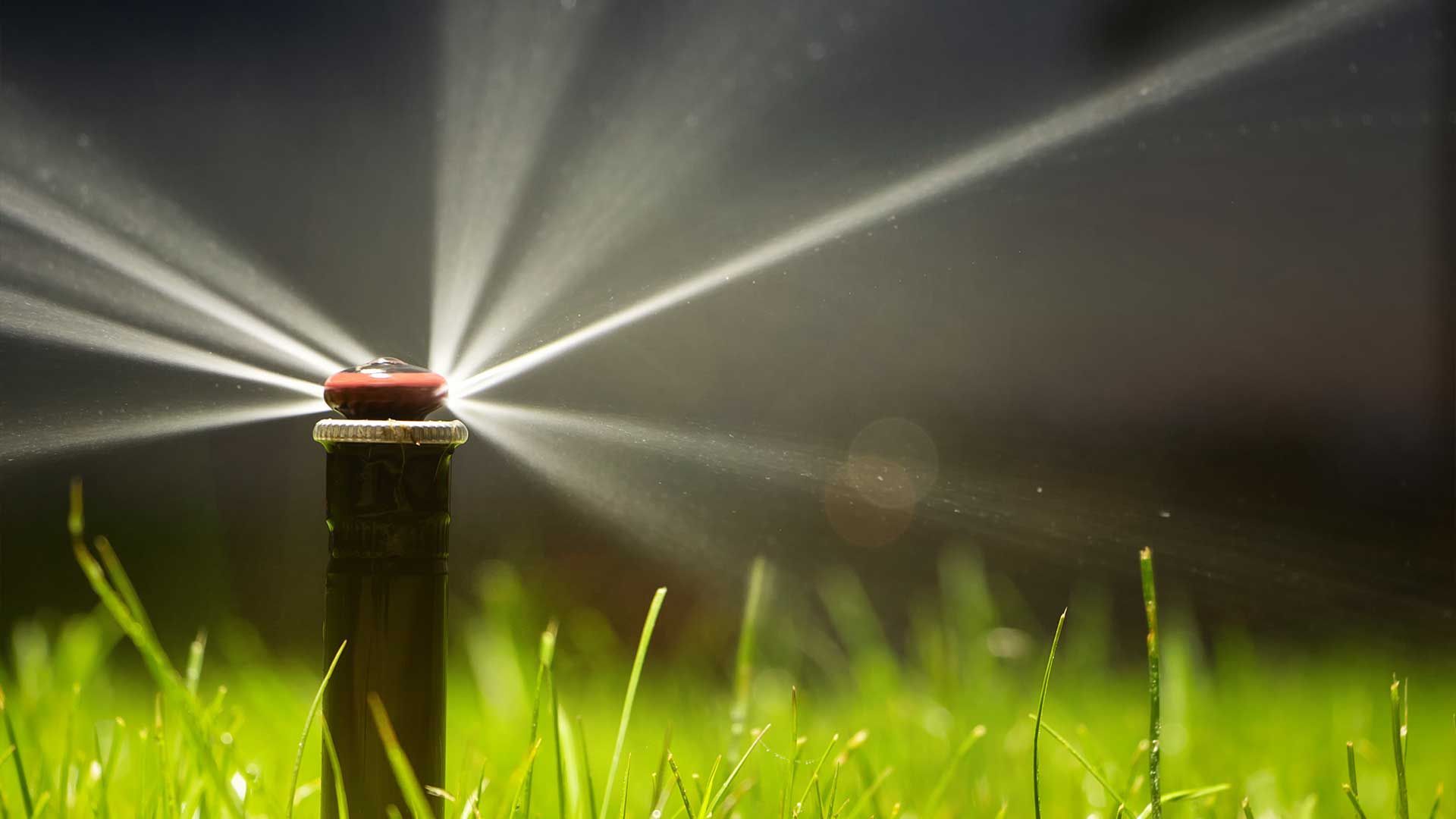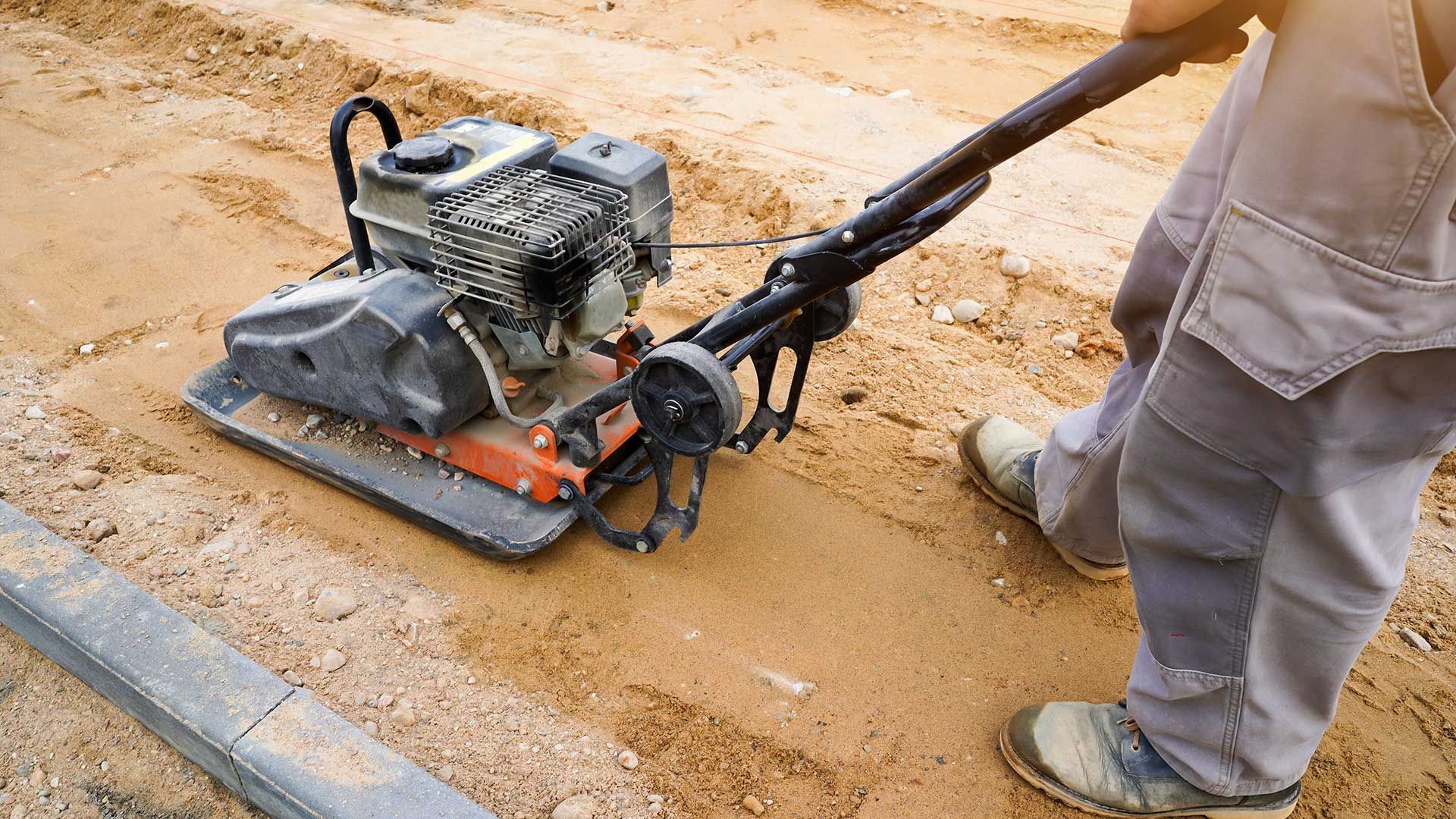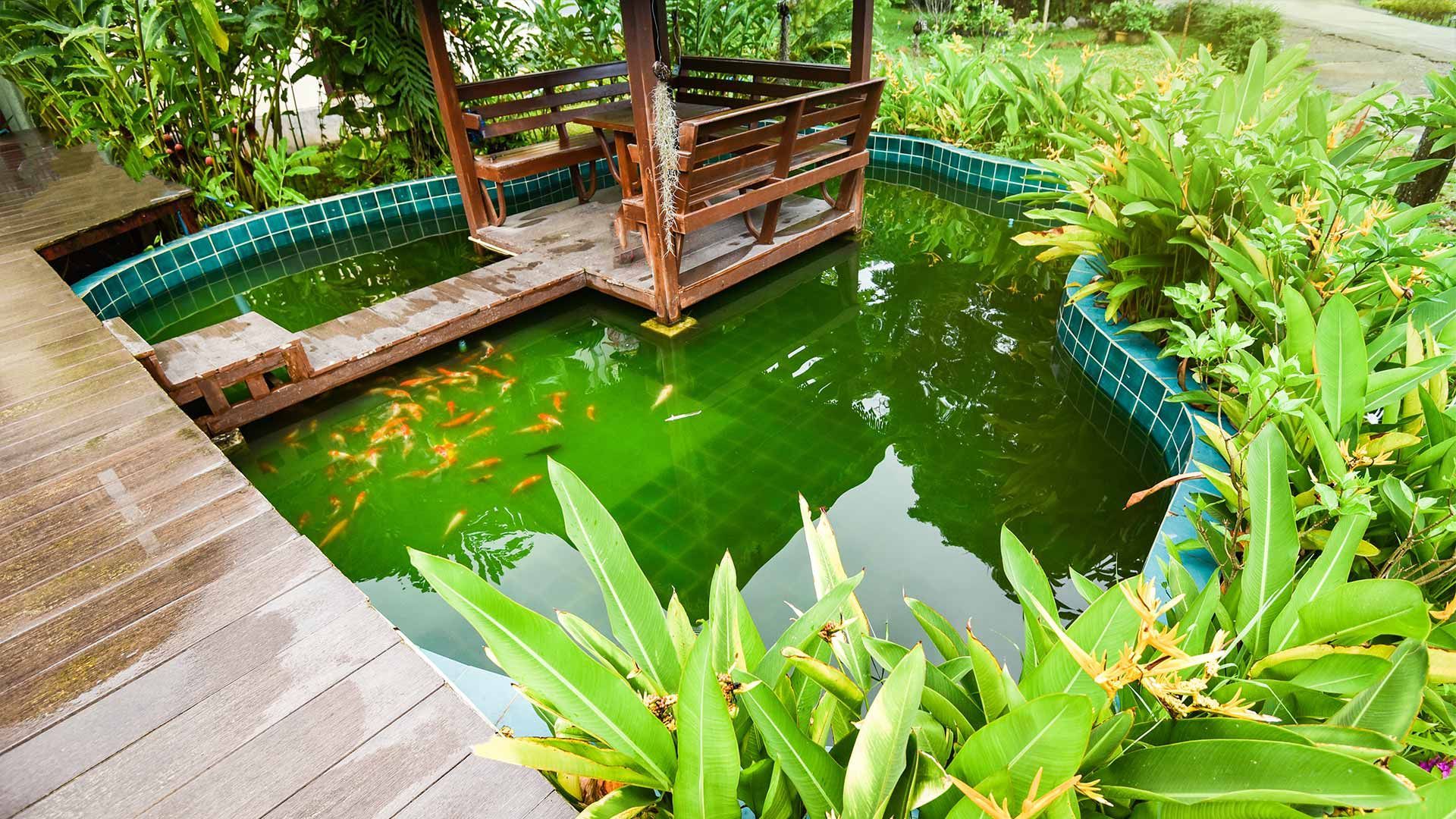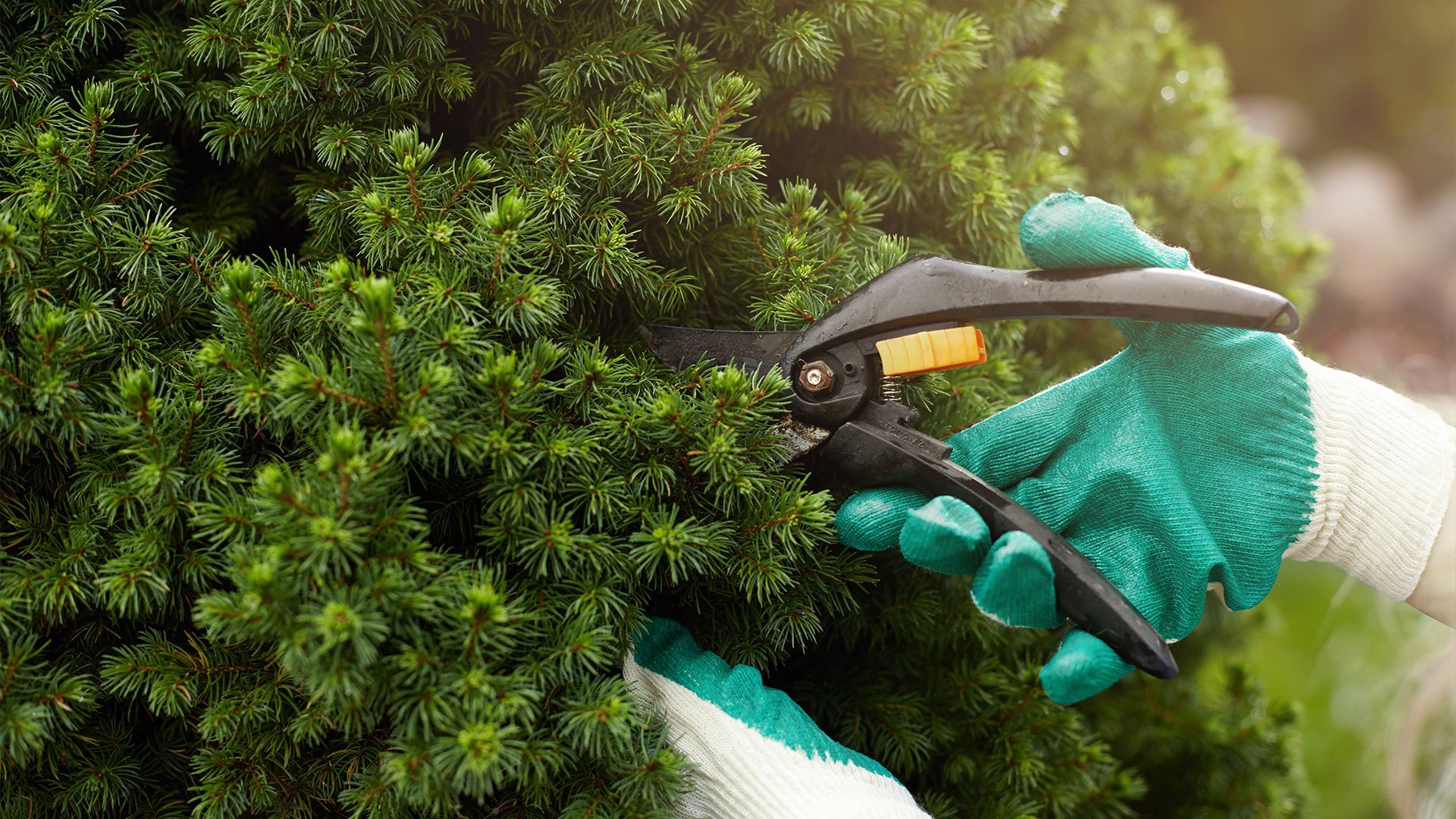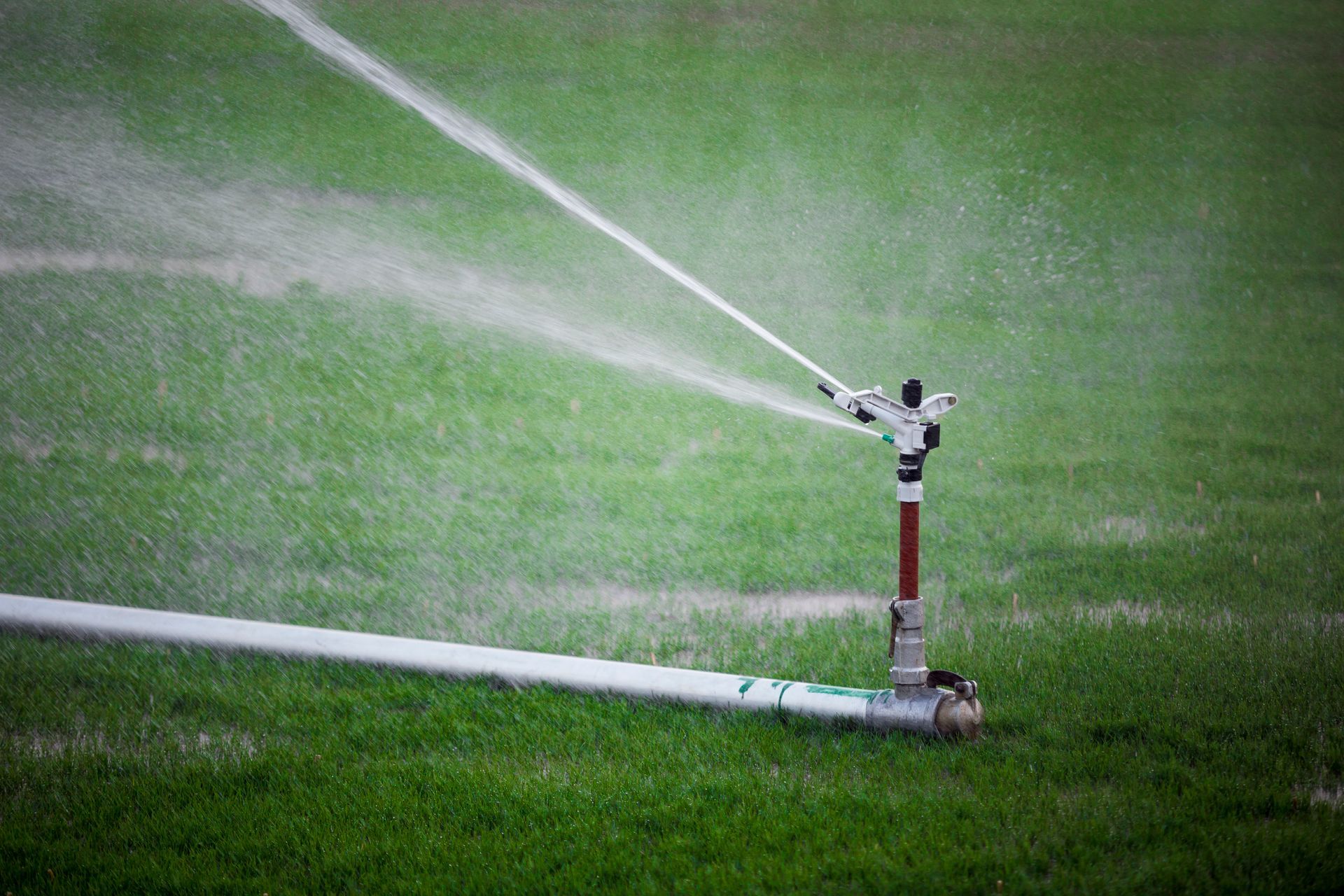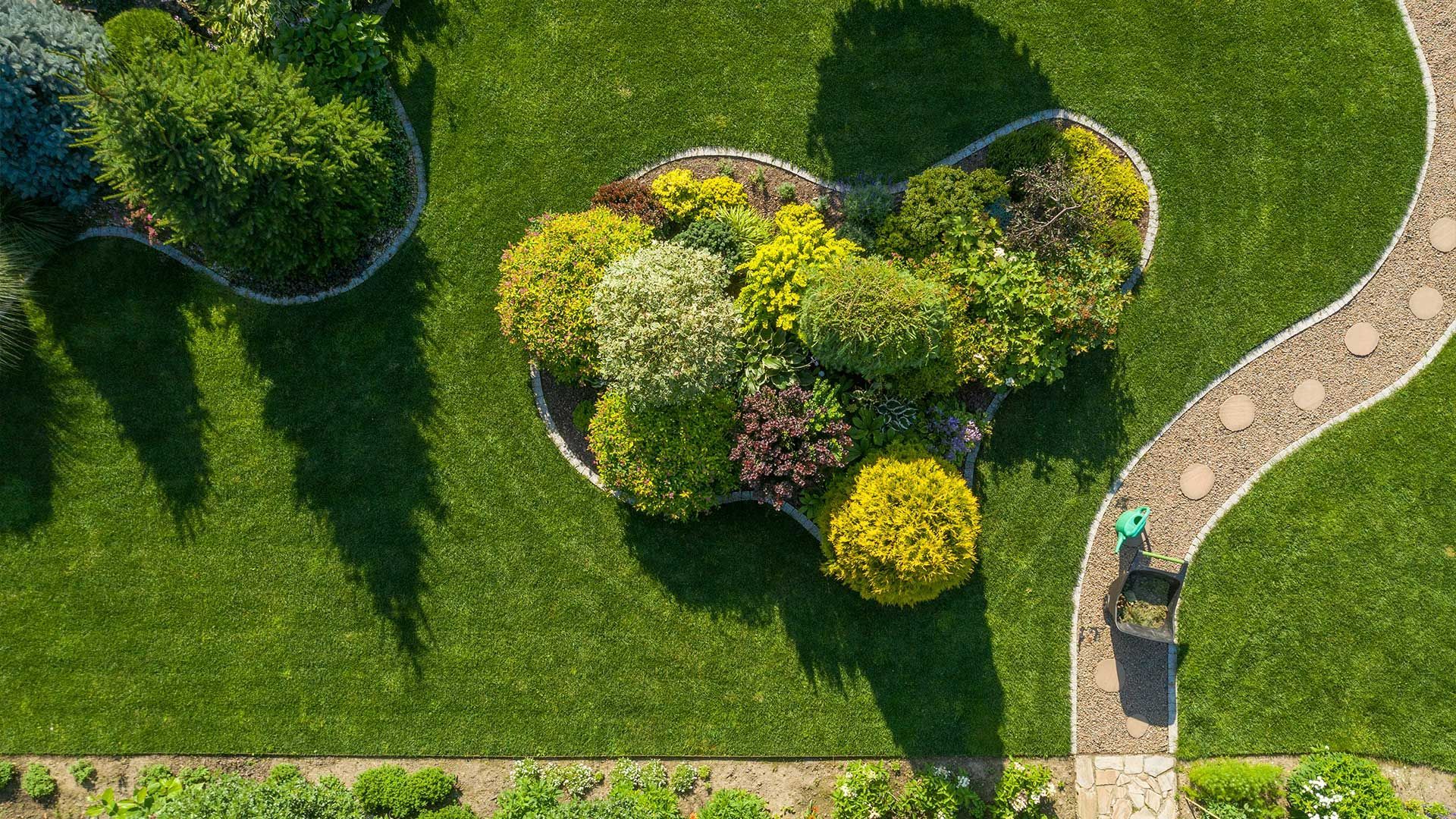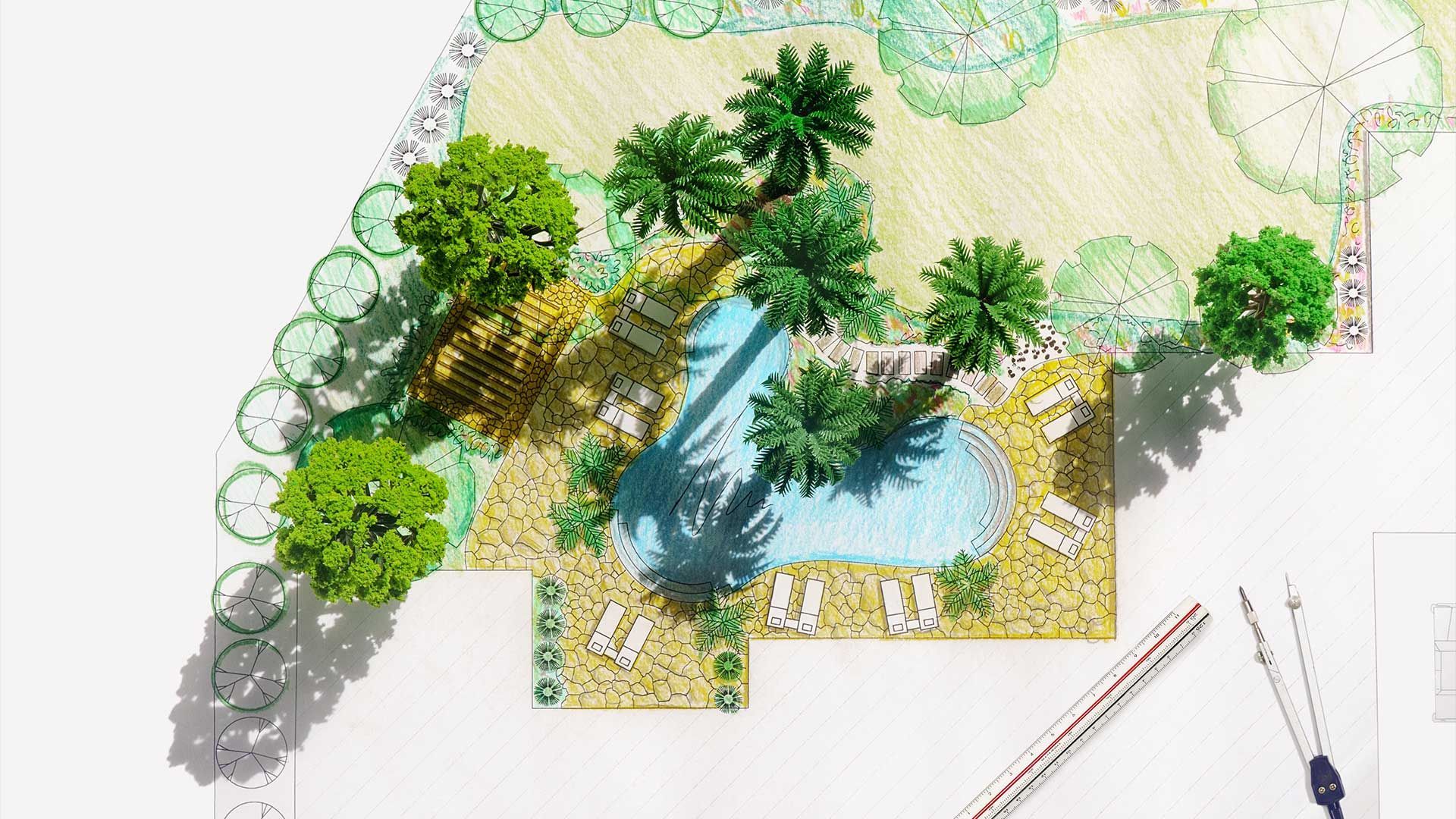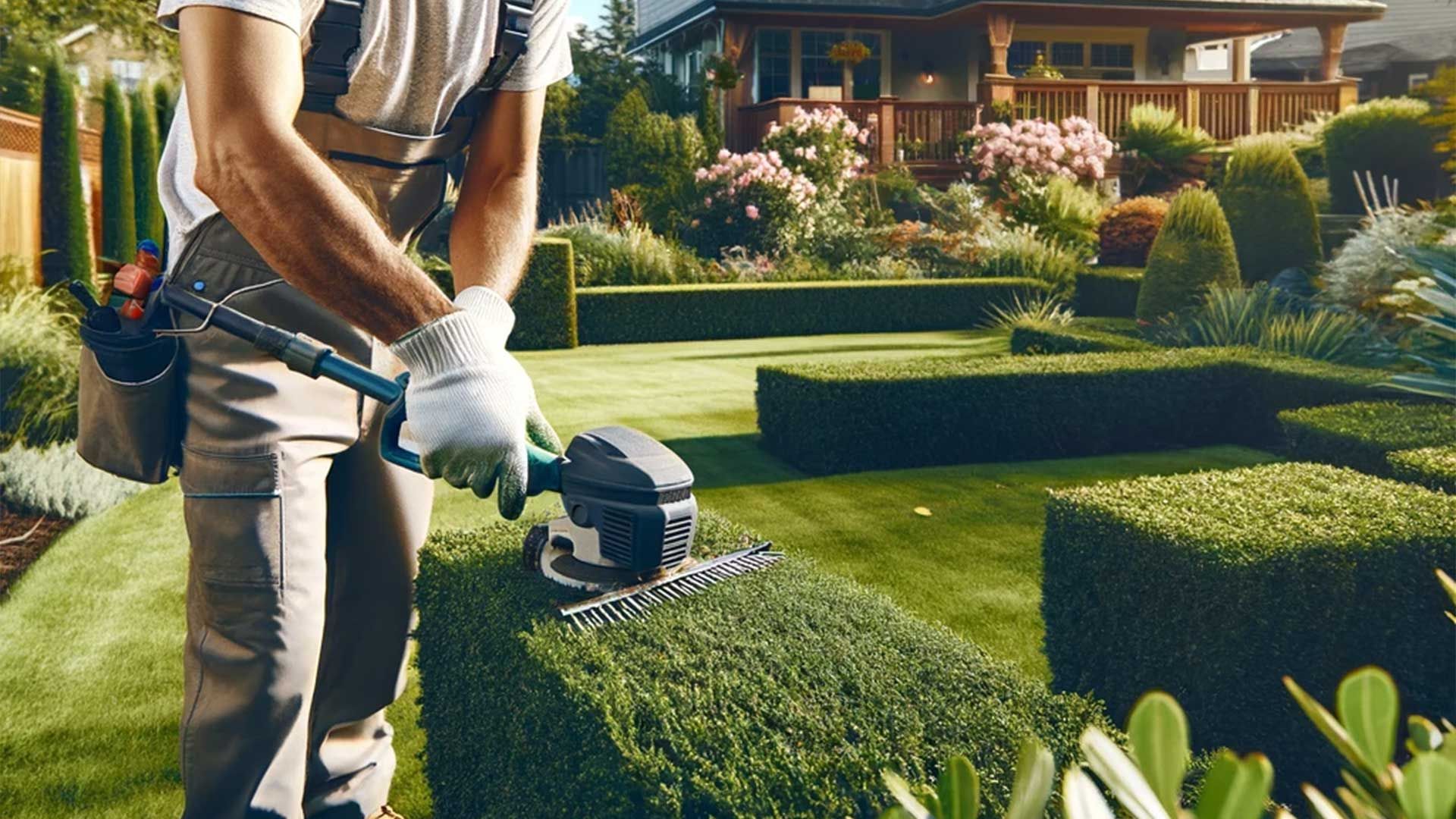Sustainable Modern Landscape Design: Green Solutions for a Greener Tomorrow
In the world of outdoor aesthetics and eco-conscious living, modern landscape design is no longer just about creating beautiful gardens and yards. It has evolved into a movement that embraces sustainability and environmental responsibility. In this article, we delve into the exciting realm of sustainable modern landscape design, a green approach that not only enhances the beauty of outdoor spaces but also contributes to a healthier planet.
Sustainable modern landscape design is more than just a trend; it's a commitment to a greener and more eco-friendly future. It's about creating outdoor spaces that not only dazzle the eye but also nurture the environment. By incorporating green solutions, eco-friendly materials, and practices that reduce the ecological footprint, sustainable modern landscape design is at the forefront of a movement towards a more sustainable tomorrow.
Join us on this journey as we explore the principles, techniques, and creative ideas behind sustainable
modern landscape design. Discover how you can transform your outdoor space into a haven of beauty and sustainability, making a positive impact on both your property and the planet.
The Principles of Sustainable Landscape Design
Sustainable modern landscape design operates on a set of core principles that form the foundation of green solutions for outdoor spaces. These principles guide landscape designers, homeowners, and businesses in creating landscapes that are not only visually stunning but also environmentally responsible.
1. Biodiversity:
Sustainable landscape design prioritizes biodiversity by incorporating native plants and creating habitats for local wildlife. This helps support pollinators like bees and butterflies while preserving the natural balance of ecosystems.
2. Resource Efficiency: Resource efficiency is a key principle, focusing on the responsible use of water, energy, and materials. This includes strategies like efficient irrigation systems, energy-efficient lighting, and the use of sustainable hardscape materials.
3. Minimizing Environmental Impact: Sustainable landscapes aim to minimize their environmental impact. This involves reducing waste, recycling materials, and choosing eco-friendly options that have a lower carbon footprint.
4. Soil Health: Healthy soil is essential for sustainable landscapes. Practices like composting, mulching, and avoiding chemical treatments help maintain soil health, promoting robust plant growth and water retention.
5. Sustainable Maintenance: Sustainability isn't just about the initial design; it's also about ongoing maintenance. Eco-conscious practices like organic pest control and minimal use of fertilizers are crucial for long-term environmental responsibility.
By adhering to these principles, sustainable modern landscape design ensures that outdoor spaces not only look beautiful but also contribute positively to the ecosystem. In the following sections, we'll delve deeper into each of these principles and how they are applied in creating greener landscapes for a greener tomorrow.
Choosing Native and Drought-Tolerant Plants
One of the foundational aspects of sustainable modern landscape design is the careful
selection of plants, with a focus on native and drought-tolerant species. This eco-conscious choice not only enhances the visual appeal of your outdoor space but also reduces water consumption and supports local ecosystems.
Native Plants:
Native plants are species that naturally occur in a specific region. They are well-adapted to the local climate, soil conditions, and wildlife. By incorporating native plants into your landscape, you create a harmonious environment that supports local birds, insects, and other wildlife. These plants often require less water and maintenance than non-native species, making them an eco-friendly choice.
Drought-Tolerant Plants: Drought-tolerant plants are champions of water efficiency. They have evolved to thrive in arid conditions, which means they can survive with minimal irrigation. By including these plants in your landscape design, you significantly reduce water usage while maintaining a lush and attractive outdoor space.
Choosing the right combination of native and drought-tolerant plants not only conserves water but also reduces the need for chemical fertilizers and pesticides, promoting a healthier and more sustainable ecosystem. In the upcoming sections, we'll delve into more eco-friendly strategies, materials, and practices that contribute to sustainable modern landscape design for a greener tomorrow.
Eco-Friendly Hardscape Materials
In sustainable modern landscape design, the focus isn't solely on plants; it also extends to the materials used in hardscaping, such as walkways, patios, and retaining walls. Eco-conscious hardscape materials contribute significantly to a greener and more sustainable outdoor space.
Recycled Materials: Incorporating recycled materials into hardscape elements is an environmentally responsible choice. Materials like reclaimed wood, recycled glass, and recycled metal can be used creatively to add character and sustainability to your landscape.
Permeable Pavers: Permeable pavers are an innovative solution for driveways and walkways. These pavers allow rainwater to penetrate the ground, reducing runoff and the burden on stormwater systems. They also help recharge groundwater and prevent soil erosion.
Reclaimed Stone: Reclaimed stone, often sourced from old buildings or structures, adds a touch of history to your landscape while minimizing the environmental impact associated with quarrying new stone. It's a sustainable choice that carries a unique charm.
Sustainable Concrete Alternatives: Traditional concrete can have a high carbon footprint. Opt for alternatives like concrete made from recycled materials or low-impact concrete mixes that reduce carbon emissions during production.
By incorporating these eco-friendly hardscape materials, you not only enhance the aesthetics of your outdoor space but also reduce the environmental footprint of your landscape. Sustainable modern landscape design is all about making choices that are not only visually appealing but also in harmony with nature. In the following sections, we'll explore more green solutions, including water conservation techniques and renewable energy integration, for a greener tomorrow.
Water Conservation Techniques
Sustainable modern landscape design places a strong emphasis on water conservation, recognizing the importance of responsible water usage in outdoor spaces. By implementing water conservation techniques, you can significantly reduce water consumption while maintaining the beauty and health of your landscape.
1. Rain Gardens: Rain gardens are designed to capture and manage rainwater runoff from roofs, driveways, and other surfaces. They feature native plants and natural filtration systems that allow rainwater to percolate into the ground, replenishing the groundwater supply.
2. Greywater Systems:
Greywater systems recycle and reuse wastewater from sources like showers, sinks, and laundry. By treating and redirecting greywater for landscape irrigation, you can reduce the demand on potable water for outdoor use.
3. Efficient Irrigation: Modern irrigation systems are equipped with smart technology that optimizes water distribution. Drip irrigation, for example, delivers water directly to plant roots, minimizing evaporation and runoff. Timers and moisture sensors ensure irrigation is applied when and where it's needed most.
4. Xeriscaping: Xeriscaping is a landscaping approach that focuses on using drought-tolerant plants and minimizing water usage. By carefully selecting plants that require less water and employing mulch and soil enhancements, xeriscaping reduces irrigation needs.
5. Rain Barrels: Rain barrels collect and store rainwater from downspouts for later use in watering plants. They are a simple and effective way to harness natural precipitation for your landscape's benefit.
By adopting these water conservation techniques, you not only contribute to a greener tomorrow but also lower your water bills and reduce the strain on local water resources. Sustainable modern landscape design goes hand in hand with responsible water management, promoting both environmental and economic sustainability. In the next sections, we'll explore further green solutions, including the integration of renewable energy and the promotion of
wildlife-friendly landscaping.
Incorporating Renewable Energy
Sustainable modern landscape design can extend its eco-conscious approach beyond the plant and hardscape choices. One way to further enhance the sustainability of your outdoor space is by integrating renewable energy sources and energy-efficient solutions.
1. Solar Panels: Solar panels are a prominent example of renewable energy integration. They capture sunlight and convert it into electricity, reducing your reliance on traditional power sources and lowering your carbon footprint. Solar-powered outdoor lighting and water features are also sustainable options.
2. Wind Turbines: In areas with consistent wind patterns, small-scale wind turbines can generate clean, renewable energy to power outdoor lighting, fountains, or other landscape elements.
3. Energy-Efficient Lighting: LED (Light Emitting Diode) lighting is energy-efficient and long-lasting. By using LED fixtures for your landscape lighting, you reduce energy consumption and maintenance costs.
4. Outdoor Power Solutions: Consider incorporating outdoor power solutions that are energy-efficient and eco-friendly, such as solar-powered charging stations or outlets for electric lawn equipment.
These renewable energy solutions not only reduce your environmental impact but also offer long-term cost savings. Sustainable modern landscape design aligns with the broader goal of transitioning to cleaner and greener energy sources.
Wildlife-Friendly Landscaping
Sustainable modern landscape design embraces the idea of creating a harmonious environment not just for humans but also for local wildlife. Designing with wildlife in mind offers several benefits, including enhanced biodiversity and natural pest control.
1. Birdhouses and Feeders: Install birdhouses and bird feeders to attract a variety of bird species to your landscape. Birds play a vital role in pollination and pest control, contributing to a healthier ecosystem.
2. Bee-Friendly Plants: Incorporate plants that attract bees, such as lavender, sunflowers, and native wildflowers. Bees are essential pollinators that support the growth of fruits and vegetables.
3. Butterfly Gardens: Create butterfly-friendly areas by planting nectar-rich flowers and providing habitat features like rocks and logs for caterpillars and chrysalises.
4. Wildlife Habitats: Design specific areas of your landscape to mimic natural habitats, such as ponds for frogs and toads, or rock piles for reptiles.
By embracing wildlife-friendly landscaping practices, you not only contribute to local biodiversity but also establish a more resilient and balanced ecosystem within your outdoor space. Sustainable modern landscape design goes beyond aesthetics; it fosters a healthier coexistence with nature.
In the upcoming sections, we'll explore additional sustainability aspects, including reducing chemical usage, maintaining a sustainable landscape, and the overall benefits of eco-conscious practices for a greener tomorrow.
Reducing Chemical Usage
One of the fundamental principles of sustainable modern landscape design is minimizing the use of chemical pesticides and fertilizers. Chemicals can have adverse effects on the environment, including soil degradation, harm to beneficial insects, and contamination of water sources. Adopting eco-friendly practices for pest control and plant health is essential for a truly sustainable landscape.
1. Organic Pest Control: Instead of chemical pesticides, consider organic alternatives such as neem oil, diatomaceous earth, or insect-repelling plants like marigolds. These methods help manage pests while minimizing harm to beneficial insects.
2. Composting: Composting is a natural way to enrich your soil and improve plant health. It reduces the need for synthetic fertilizers by providing a nutrient-rich source of organic matter.
3. Mulching: Mulch helps conserve soil moisture, regulate soil temperature, and suppress weed growth. Organic mulches, like wood chips or compost, improve soil quality as they decompose.
4. Integrated Pest Management (IPM): IPM is an eco-friendly approach that combines various strategies to manage pests efficiently. It includes monitoring, prevention, and the use of least-toxic control methods.
5. Native Plants' Resilience: Native plants are often more resistant to local pests and diseases, reducing the need for chemical interventions.
By reducing chemical usage in your sustainable modern landscape design, you not only protect the environment but also create a healthier and more balanced ecosystem. The benefits extend to improved soil quality, increased pollinator activity, and safer outdoor spaces for pets and children.
Maintenance Practices for Sustainability
Maintaining a sustainable landscape requires ongoing commitment and eco-conscious practices. Here are some key maintenance practices that promote long-term sustainability:
1. Pruning: Regular pruning not only keeps plants healthy but also enhances their appearance. Prune strategically to remove dead or diseased branches while preserving natural forms.
2. Mulch Renewal: Periodically replenish mulch to maintain its effectiveness in moisture retention and weed suppression.
3. Compost Application: Apply compost seasonally to enrich the soil with organic matter and essential nutrients.
4. Water Management: Adjust irrigation systems based on seasonal needs and rainfall to prevent overwatering.
5. Soil Testing: Periodic soil testing helps ensure that your landscape receives the right nutrients and pH adjustments as necessary.
6. Pest Monitoring: Continuously monitor your landscape for signs of pests and take proactive measures to address any issues.
Sustainable modern landscape design is a dynamic process that requires ongoing care and attention. By implementing these maintenance practices, you'll preserve the sustainability and beauty of your landscape for years to come.
Conclusion
In the world of modern landscape design, sustainability isn't a choice; it's a responsibility towards our planet. Sustainable modern landscape design is your opportunity to transform your outdoor space into a lush, eco-conscious haven that not only captivates the eye but also nurtures the environment.
At
Carolina Custom Landscape and Design dba Plants Unlimited, we are passionate about sustainable modern landscape design. Our team is dedicated to implementing green solutions that make a positive impact on both your property and the planet. We believe that every outdoor space has the potential to be a green oasis, and we're here to make that vision a reality.
To embark on your journey towards a greener tomorrow and experience the beauty of sustainable modern landscape design, contact us today at
919-801-8483. Together, we'll create an outdoor space that's not only visually stunning but also environmentally responsible. Your landscape can be a reflection of your commitment to a more sustainable world, and we're here to help you achieve that vision.
FAQs
